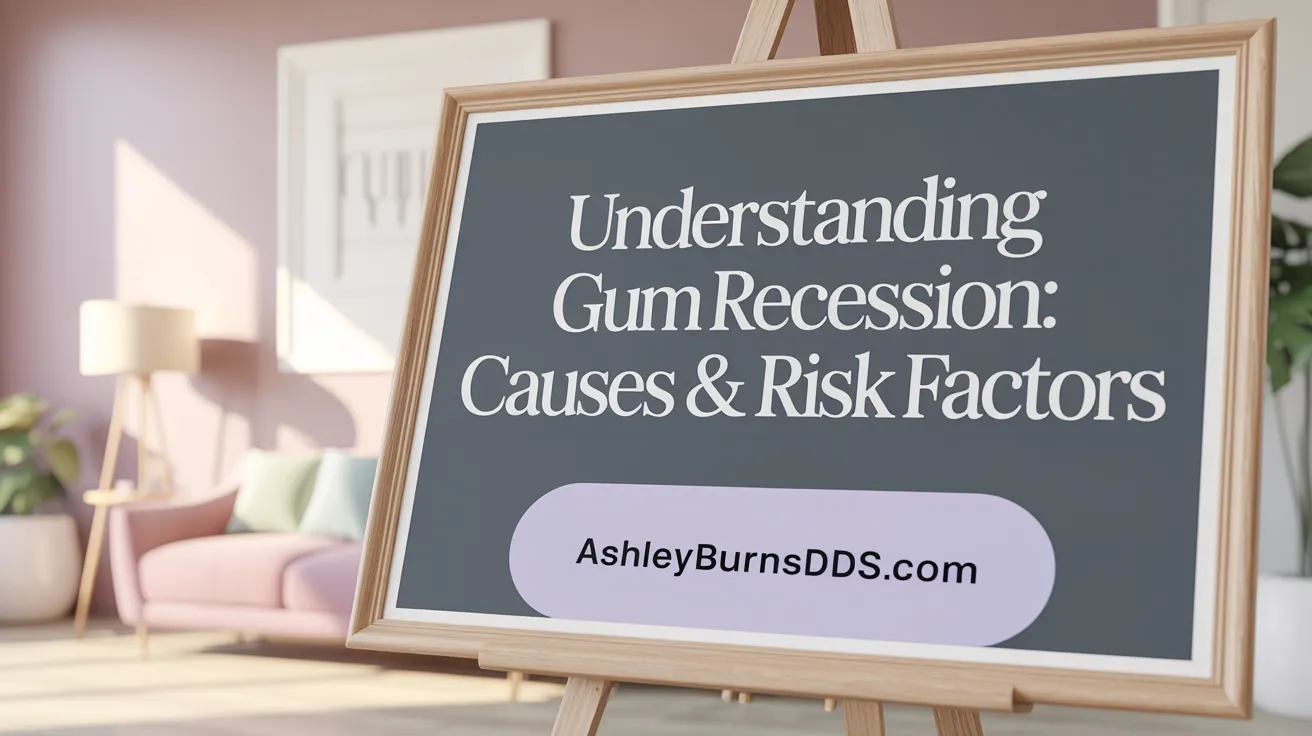Understanding Gum Recession and Its Importance
Gum recession, a condition where gum tissue pulls back from teeth exposing their roots, affects millions and can lead to serious dental issues such as tooth sensitivity, cavities, and even tooth loss. Early recognition of gum recession’s subtle signs is crucial for stopping its progression and preserving oral health. This article delves into how to spot the early signs, understand the causes, differentiate healthy gums from receding ones, and know when to seek professional care, enabling readers to take proactive steps towards maintaining healthy gums and teeth.
Early Signs and Visual Indicators of Gum Recession

Early signs and symptoms of gum recession
Recognizing the early signs of gum recession is crucial for preventing more serious dental issues. Initial indicators include the appearance of longer teeth, as the gum tissue pulls away, revealing more of the tooth surface or roots. People may experience increased tooth sensitivity to hot, cold, sweet, or acidic foods due to exposure of the tooth roots which lack enamel. You might notice inflamed, swollen, or bleeding gums during brushing or flossing, along with persistent bad breath or an unpleasant taste. Tender gums and minor discomfort near the gum line are also common early symptoms. If these signs are ignored, gums may become more inflamed, and the recession can lead to loosening of teeth and further bone loss. Factors such as aggressive brushing, plaque buildup, and tobacco use often contribute to these early changes. Prompt attention to these signs and maintaining good oral hygiene can help prevent progression.
Causes, Risk Factors, and Progression of Gum Recession

Causes of early gum recession and what are its risk factors?
Gum recession, particularly in its early stages, is often caused by a combination of factors. Aggressive brushing using hard-bristled toothbrushes can wear down gum tissue over time, causing it to pull back. Poor oral hygiene allows plaque and tartar buildup, which irritates the gums and contributes to tissue loss. Tobacco use, including smoking and body piercings near the gums, can impair blood flow and hamper healing, increasing recession risk. Hormonal changes during pregnancy or menopause can make gums more sensitive and prone to recession. Additionally, certain medical conditions, such as diabetes or autoimmune diseases, exacerbate gum issues (gum recession causes, effects of tobacco on gums, hormonal changes affecting gums).
Risk factors for gum recession extend beyond habits and health conditions. Genetics play a significant role, with some individuals inheriting thinner gum tissue that is more susceptible to recession. Age is also a factor, as periodontal tissues weaken over time. Misaligned or crooked teeth cause uneven pressure on gums, accelerating tissue wear. Other influences include grinding or clenching teeth (bruxism), which exert excessive force on the gums and supporting structures (risk factors for gum recession, grinding and clenching teeth impact, genetics and gum recession).
Early Signs and Symptoms of Gum Disease Linked to Gum Recession

What are the early signs of gum disease linked to gum recession?
Recognizing the initial signs of gum disease is crucial in preventing the progression to gum recession. Early indicators include gums that become red, swollen, and tender. These inflamed gums often bleed easily during brushing or flossing, even with gentle pressure. Persistent bad breath or a foul taste in the mouth can also be a warning sign, signaling bacterial buildup and infection.
In addition, one of the most visible symptoms of the early stages of gum disease linked to recession is the gums beginning to pull away from the teeth. This recession exposes the roots of the teeth, making them look longer. Sensitive teeth that react to hot, cold, or sugary foods are common early signs, highlighting that the protective gum tissue is receding.
Discomfort during routine oral hygiene activities, such as brushing or flossing, can further indicate underlying periodontal issues. Paying attention to these signs allows for timely dental intervention, which can stop or slow the recession process and treat the infection effectively.
Symptoms like bleeding, swelling, and bad breath
Bleeding gums, especially during regular brushing and flossing, are among the first noticeable symptoms of gum disease connected with recession. Swollen and red gums indicate inflammation, often caused by bacterial infection. Bad breath, persistent and resistant to mouthwash, frequently accompanies these signs, resulting from bacteria and toxins harbored beneath the gumline.
These symptoms should not be ignored, as they suggest inflammation and infection that weaken the supporting tissues around the teeth. If left untreated, such issues can lead to the progressive loss of gum tissue, increasing the severity of recession.
Consequences of untreated gum disease and recession
Failing to address early signs of gum disease can have significant consequences. As the infection advances, it destroys the supporting bone and tissue, causing the gums to recede further. This not only results in longer-looking teeth but also increases tooth sensitivity and the risk of cavities on exposed roots.
Without intervention, gum recession can lead to loose teeth, shifting bites, and ultimately tooth loss. Chronic infection poses additional health risks, including systemic health problems like heart disease and diabetes. Therefore, early detection and treatment of gum disease are essential to maintaining oral and overall health.
Importance of Early Detection and Professional Diagnosis

Why early detection matters
Early detection of gum recession is crucial for preventing serious oral health complications. Since the initial signs of gum disease and recession are often subtle—like slight sensitivity or minor gum shrinkage—these can easily go unnoticed without professional assessment. Recognizing these early changes allows for interventions that can halt or slow down tissue and bone loss, preserving your natural teeth and supporting structures.
Role of dental check-ups and diagnosis
Regular dental visits play a vital role in diagnosing gum recession early. Dentists use tools like a periodontal probe to measure gum pocket depths and observe gum tissue health. These assessments help identify recession signs before noticeable damage occurs. Early diagnosis enables treatments such as professional cleanings, medicaments, or minimally invasive procedures, which are more effective and less costly than advanced surgical options.
When to seek professional dental evaluation
If you notice symptoms such as increased tooth sensitivity, longer-looking teeth, exposed roots, or bleeding gums, it's time to consult a dental professional. Persistent bad breath or loose teeth are also warning signs that should prompt an evaluation. Addressing concerns early helps prevent the progression of gum disease, reduces the risk of tooth loss, and can improve overall oral and systemic health. Regular check-ups ensure that subtle signs don’t go unnoticed and that appropriate treatment is initiated at the earliest stage.
Prevention Strategies to Protect Your Gums

What prevention tips and strategies can help avoid gum recession?
Preventing gum recession starts with consistent and gentle oral hygiene practices. Using a soft-bristled toothbrush helps prevent damage to the gum tissue while brushing twice daily, and flossing daily removes plaque and tartar from between teeth, reducing the risk of gum disease.
Maintaining overall good oral health is crucial. This includes regular dental check-ups to detect early signs of gum issues and professional cleanings to remove plaque and tartar buildup that cannot be eliminated by brushing alone.
Avoiding tobacco products, such as cigarettes and chewing tobacco, significantly decreases the risk of developing periodontal disease, which is a primary cause of gum recession.
Managing health conditions that affect gum health, like diabetes or autoimmune diseases, through proper medical care can also help reduce the likelihood of gum recession.
If periodontal disease or inflammation is present, prompt treatment like deep cleaning (scaling and root planing) can control bacterial growth and prevent further tissue damage.
In addition, adopting a healthy lifestyle—such as eating a balanced diet rich in vitamins and minerals—supports gum health.
Overall, gentle oral care combined with regular dental visits and addressing risk factors early is essential for maintaining healthy gums and preventing their recession.
Treatment Options and Managing Gum Recession Progression

What are the treatment methods for early and advanced gum recession?
Gum recession, once it occurs, cannot grow back on its own. However, various treatments to stop gum recession are available to prevent further recession and address the symptoms. In mild cases, noninvasive options such as desensitizing toothpaste, fluoride varnish, and improved oral hygiene and gum health may help reduce sensitivity and slow progression.
For more severe cases, especially where significant tissue loss has occurred, dental professionals may recommend surgical procedures. These include gum grafting or soft tissue grafts, which involve transplanting tissue from the roof of the mouth or a donor source to cover exposed roots. Such treatments aim to restore gum tissue, prevent further damage, and improve the appearance of the smile.
What are the nonsurgical and surgical interventions?
Nonsurgical treatments include deep cleaning procedures like scaling and root planing which remove plaque and tartar buildup that contribute to gum recession. Antibiotic therapy or antimicrobial mouthwashes may also be prescribed to control bacterial infection.
Surgical options are considered when recession is extensive or progressing despite nonsurgical efforts. Gum graft surgery is common and effective, involving the placement of tissue to cover exposed roots and promote healing. Other techniques may include regeneration procedures that encourage the growth of new tissue and bone, aiming to restore lost support.
The role of dental professionals in treatment and recovery
Dental professionals, particularly periodontists, play a vital role in assessing gum recession severity and recommending appropriate treatment. They perform the necessary procedures, provide guidance on maintaining oral health post-treatment, and monitor healing progress. Learn more about when to visit a periodontist for gum recession.
Successful recovery depends heavily on patients' adherence to follow-up care, proper oral hygiene practices, and avoiding risk factors such as tobacco use and aggressive brushing. Regular dental checkups for gum health ensure early detection of any recurrence or further issues, helping maintain gum health over time.
Taking Action Early: Safeguarding Your Gum Health
Recognizing the early signs of gum recession empowers you to take proactive steps in preventing serious dental complications. Understanding the causes, symptoms, and visual indicators helps you differentiate between healthy and receding gums. Early detection and timely professional evaluation are crucial in managing gum recession effectively to avoid progression to advanced periodontal disease and tooth loss. By adhering to good oral hygiene practices, avoiding harmful habits such as aggressive brushing and tobacco use, and maintaining regular dental visits, you can protect your gums and overall oral health. Should signs of gum recession appear, consulting dental professionals promptly ensures appropriate treatment, preserving not only your smile’s health but also its appearance for years to come.
